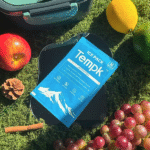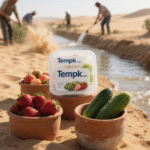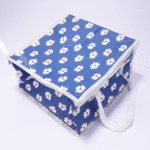Securing Cold Chain Distribution for Pharmaceuticals: 2025 Insights
Introduction: The pharmaceutical cold chain is no longer a niche function; it is a mission critical system that keeps vaccines, biologics and personalised therapies safe from factory to patient. Industry reports estimate that the global cold chain market for pharmaceuticals was about US $6.4 billion in 2024 and will grow to US $6.6 billion in 2025. With approximately 85 % of biologic drugs requiring refrigeration or freezing, contract manufacturing organisations must maintain precise temperature control during every step. This article, updated in November 2025, explains what makes pharmaceutical cold chain distribution unique, examines major pain points, reviews monitoring technologies, outlines regulatory requirements and highlights trends shaping the next decade.
What defines pharmaceutical cold chain distribution? Understand how the growing demand for biologics, vaccines and personalised therapies drives specialised infrastructure and real time monitoring.
What challenges do CDMOs and logistics providers face? Explore process development, validation, supplier coordination and risk management issues when handling temperature sensitive drugs.
Which monitoring technologies protect product integrity? Compare data loggers, IoT sensors, RFID tags, GPS trackers, BLE sensors, smart reefers and cloud platforms, including their advantages and drawbacks.
How do regulations shape cold chain distribution? Learn how Good Distribution Practices (GDP), USP <1079>, IATA rules, WHO guidance and ISO standards ensure compliance.
What future trends will influence cold chain logistics? Discover how precision medicine, global clinical trials and integrated IoT/AI systems are transforming cold chain operations.
What makes pharmaceutical cold chain distribution unique?
Direct answer: Pharmaceutical cold chain distribution covers more than transporting drugs in refrigerated trucks; it encompasses end to end temperature control across development, manufacturing, storage and distribution. The explosion of biologics, vaccines and advanced therapies has propelled the sector into one of the fastest growing segments in contract development and manufacturing. Integrated infrastructure (temperature controlled suites, storage facilities and quality labs), specialized equipment (cryogenic freezers and controlled rate freezers) and real time monitoring systems distinguish pharmaceutical cold chains from conventional logistics.
Expanded explanation: Unlike food or consumer goods, pharmaceuticals often have narrow temperature windows. Biologics must remain refrigerated between 2 °C and 8 °C or frozen below −20 °C, while cell and gene therapies may require −80 °C to −150 °C. Around 85 % of biologics need cold chain management, and the sector’s value is projected to rise steadily through 2035. Contract manufacturers build controlled suites, storage chambers and liquid nitrogen dewars to ensure uniform conditions during cell culture, purification and fill finish operations. Real time monitoring systems with IoT enabled sensors and data loggers provide continuous surveillance and immediate alerts for temperature excursions.
Stages of the pharmaceutical cold chain
Pharmaceutical cold chain distribution begins long before a product enters a truck. Understanding each stage helps identify where temperature control is critical:
| Stage | Key Activities | Relevance for you |
| Process Development & Tech Transfer | Determine optimal storage conditions for raw materials, intermediates and finished products; define temperature ranges for bioreactor operation and purification; document temperature sensitive operations during technology transfer. | Early decisions set the parameters for the entire cold chain. Proper documentation during tech transfer prevents deviations when scaling up. |
| Manufacturing Operations | Maintain precise temperatures during cell culture (typically 36–37 °C), controlled cooling during harvest, refrigerated storage of intermediates (2–8 °C) and cryogenic storage of drug substances (–60 °C to –80 °C). | Variations in cooling rates or hold times can degrade product quality. Validated equipment and procedures are necessary at each step. |
| Quality Control & Stability Testing | Conduct stability studies in validated chambers; monitor temperature continuously with alarm systems and backup power to prevent excursions that could invalidate data. | Stability chambers must meet ICH conditions; data integrity is critical for regulatory submissions. |
| Storage & Inventory Management | Store finished products in segregated zones for different temperature requirements; use warehouse management systems to track inventory location, temperature history and expiration dates. | Digital systems ensure complete chain of custody and efficient stock rotation. |
| Packaging & Distribution | Validate thermal packaging solutions (insulated shippers, phase change materials, gel packs) and partner with logistics providers offering refrigerated containers and real time GPS tracking. | Proper packaging mitigates temperature excursions during transit; selecting the right partner ensures consistent handling. |
Practical advice for managing early stages
Document critical parameters: Capture cooling rates, freeze–thaw cycles and hold times during development and tech transfer. This documentation becomes the blueprint for commercial operations.
Invest in integrated infrastructure: Build or partner with facilities that offer temperature controlled suites and liquid nitrogen storage.
Use qualified monitoring systems: Real time sensors and data loggers should provide continuous temperature records and alarms.
Plan for global trials: International trials require coordination across climate zones; ensure your network can handle cross border shipments with real time visibility.
Example: A CDMO preparing a personalized CAR T therapy for a global trial documented every temperature sensitive step and used cryogenic freezers to store the drug substance at –80 °C. During shipping, insulated containers with phase change materials and real time IoT sensors maintained the required range and alerted the team when a customs delay occurred. The advance planning enabled the therapy to arrive within its viability window, preserving its therapeutic potency.
What challenges do CDMOs and logistics providers face?
Direct answer: Pharmaceutical cold chain distribution presents complex technical, operational and financial challenges. Process development and technology transfer are more intricate for biologics than small molecule drugs, requiring precise control of cooling rates, hold times and storage temperatures. Equipment qualification demands extensive validation, including installation, operational and performance qualification and temperature mapping. Supply chain coordination involves qualifying multiple partners, each of whom must maintain validated packaging, real time monitoring capabilities and contingency procedures. These requirements increase operational costs and necessitate robust risk management and documentation.
Expanded explanation: CDMOs must validate each freezer, cold room and shipping container before use, performing temperature mapping and verifying alarm functionality. They must maintain continuous monitoring records, investigate every temperature excursion and implement corrective and preventive actions (CAPA). Supply chain coordination is fraught with risk—any handoff between raw material suppliers, logistics partners and distributors can compromise temperature control. Business continuity plans are essential; backup generators, secondary freezers and disaster recovery procedures protect against power outages or equipment failures. Lastly, rising costs for energy, specialized packaging and qualified logistics services challenge profitability.
Major pain points
Process complexity: Temperature sensitive processes require sophisticated studies and validation to define safe cooling rates and freeze–thaw cycles.
Equipment validation: IQ/OQ/PQ, temperature mapping and backup power qualification are time consuming and expensive.
Partner qualification: CDMOs must audit and qualify suppliers, carriers and packaging vendors to ensure they meet refrigeration, monitoring and contingency standards.
Documentation burden: Continuous temperature records, deviation investigations, CAPA systems and change control add overhead.
Risk management: Business continuity plans require duplicate equipment, generators and validated emergency procedures.
Cost pressures: Energy, packaging materials and specialized logistics services drive up operational expenses.
Tips to overcome challenges
Standardize validation protocols: Develop templates for IQ/OQ/PQ and temperature mapping so each new facility or piece of equipment follows the same process.
Diversify suppliers: Avoid single source dependencies; qualify multiple carriers and packaging vendors to reduce risk.
Invest in training: Educate staff on GDP requirements, data integrity and CAPA procedures. Empower them to respond quickly to excursions.
Implement risk based monitoring: Use predictive analytics to prioritize high risk shipments and schedule preventive maintenance, reducing unplanned downtime.
Benchmark costs: Track energy usage, packaging spend and transport fees to identify savings opportunities.
Real world example: A CDMO shipping monoclonal antibody batches to Asia faced repeated temperature excursions due to long customs delays. After auditing its supply chain, the company qualified a second logistics provider with faster clearance times and invested in phase change packaging with 96 hour hold times. Continuous IoT monitoring and a web dashboard allowed real time adjustments, reducing excursions by 70 % and shortening delivery times.
Which monitoring technologies protect product integrity?
Direct answer: Modern monitoring technologies range from simple data loggers to sophisticated IoT platforms. Each option balances cost, accuracy and connectivity. Data loggers are low cost devices that record temperature and humidity for later analysis. IoT based wireless sensors provide real time temperature and humidity data via cellular, Wi Fi or LoRaWAN networks. RFID temperature sensors enable automated scanning and reduce manual errors. GPS trackers combine location and temperature data for global visibility, while Bluetooth Low Energy (BLE) sensors offer energy efficient monitoring over short ranges. Smart refrigerated containers (reefers) self regulate temperature but consume more energy. Cloud platforms aggregate data, and AI analytics predict equipment failures and optimise routes.
Expanded explanation: Choosing a monitoring solution depends on shipment duration, connectivity and budget. Data loggers are ideal for low cost compliance but require manual retrieval; this can be too late if a shipment deviates. IoT sensors transmit data continuously, enabling proactive intervention; however, they need reliable network connectivity and are costlier. RFID tags automate inventory management and scanning but may suffer from interference and high infrastructure costs. GPS trackers provide both location and temperature, offering enhanced security and route optimisation; yet they require stable power and may incur high data transmission costs. BLE sensors are useful in warehouses and local transport due to their low power consumption and affordability but have limited range. Smart reefers ensure precise temperature control for long distance shipments but require significant energy and maintenance investments. Cloud platforms centralise data from sensors and provide dashboards, compliance reporting and predictive analytics. For ultra cold shipments, specialised sensors monitor dry ice or liquid nitrogen conditions. AI tools analyse temperature trends and predict failures, improving efficiency.
Comparing monitoring technologies
| Monitoring Solution | Key Features | Advantages | Drawbacks |
| Data loggers | Battery powered devices that record temperature and humidity; provide historical data for compliance. | Affordable; simple to deploy; reliable for storage units or short shipments. | Manual data retrieval delays intervention; no real time alerts. |
| IoT wireless sensors | Sensors transmit data continuously via cellular, Wi Fi or LoRaWAN networks. | Real time monitoring; automated alerts; enables predictive maintenance. | Higher cost; requires consistent network and power; potential cybersecurity risks. |
| RFID temperature sensors | RFID tags with embedded temperature monitoring; scanned automatically at checkpoints. | Automates inventory tracking; reduces human error; simultaneous scanning of multiple shipments. | Limited signal range; interference from metal or liquids; high initial investment. |
| GPS trackers | Combine location tracking with temperature monitoring inside containers. | Provide real time location and temperature; improve route optimisation and cargo security. | Require stable power or long life batteries; high operating costs for data transmission. |
| BLE sensors | Low power Bluetooth devices for short range environments like warehouses. | Energy efficient; cost effective; easy to integrate with mobile apps. | Limited range (30–100 m); susceptible to interference; not suitable for long haul shipments. |
| Smart reefers | Temperature controlled containers with automated cooling and remote monitoring. | Maintain stable temperatures regardless of external conditions; ideal for long distances. | Energy intensive; expensive to maintain; mechanical failures can be catastrophic if not addressed immediately. |
| Cloud platforms & AI | Centralise data from various sensors, provide dashboards, audit trails and predictive analytics. | Offer remote visibility; support compliance reporting; predict equipment failures and optimise logistics. | Depend on internet connectivity; subscription costs; require data privacy controls. |
Tips for choosing monitoring solutions
Match technology to your route: Use low cost data loggers for short, routine deliveries; adopt IoT sensors or GPS trackers for long, high value shipments requiring real time visibility.
Integrate systems: Choose solutions that can feed data into a single cloud platform to simplify compliance reporting and decision making.
Plan for power: Ensure sensors and trackers have sufficient battery life or access to vehicle power. For cryogenic shipments, verify that sensors can withstand –80 °C and lower.
Pilot new technologies: Test RFID or BLE systems in controlled environments before deploying across your network.
Address cybersecurity: Implement strong encryption and access controls for IoT systems to protect sensitive data.
Case study: A vaccine distributor transitioned from manual data loggers to IoT based wireless sensors across its fleet. Real time dashboards allowed the operations team to reroute shipments when road closures threatened delivery times. The system’s predictive analytics identified a refrigeration unit trending toward failure and scheduled maintenance before a breakdown occurred, preventing a potential cold chain breach.
How do regulations shape pharmaceutical cold chain distribution?
Direct answer: Regulations ensure that pharmaceutical cold chains maintain product quality and patient safety through standardized practices and documentation. Good Distribution Practices (GDP) provide the foundation for handling, storage and transport of medicines. The U.S. Pharmacopeia (USP) chapter <1079> outlines requirements for temperature control and monitoring. The International Air Transport Association (IATA) publishes Temperature Control Regulations for air shipments, covering packaging, monitoring and handling procedures. The World Health Organization (WHO) issues guidelines for storing and transporting time and temperature sensitive pharmaceutical products, especially in low resource settings【652962249160869†L179-L195】. ISO standards (13485, 17025, 9001, 28000) define quality management, laboratory competence and supply chain security. Together, these frameworks create a comprehensive compliance landscape.
Expanded explanation: GDP guidelines mandate consistent storage conditions, proper documentation and traceability throughout the supply chain. They require distributors to use validated equipment and ensure staff competency. The USP <1079> chapter addresses mean kinetic temperature calculations, stability protocols and container integrity testing, helping companies evaluate temperature excursions. IATA’s Temperature Control Regulations (TCR) set requirements for active and passive packaging, thermal mapping and training of personnel for air transport. WHO’s model guidance emphasises infrastructure considerations in regions with unreliable power and advocates robust cold chain management practices【652962249160869†L179-L195】. ISO 13485 and 9001 relate to quality management systems, while ISO 17025 ensures laboratory competence for calibration. ISO 28000 focuses on supply chain security, helping organisations manage risks such as theft or tampering. Country specific regulations like the EU’s Falsified Medicines Directive (FMD) require serialization and safety features to combat counterfeits, whereas the U.S. Drug Supply Chain Security Act (DSCSA) mandates product identification, verification and tracing.
Principles of effective cold chain management
The EasyLog Guide to Cold Chain Compliance summarises six principles for maintaining reliable cold chains:
Temperature control and stability: Maintain stable conditions from production to administration using appropriate storage, transport and packaging.
Continuous monitoring: Use real time data and alert systems for immediate response to deviations.
Traceable documentation: Keep full records of temperature data, handling and deviations to demonstrate compliance.
Proactive risk management: Identify vulnerabilities and have action plans ready to mitigate disruptions.
Staff competency: Train everyone handling sensitive products in cold chain protocols.
Validated equipment and processes: Use tools and procedures that meet regulatory standards.
Understanding cold chain breaches and consequences
A cold chain breach—or temperature excursion—occurs when a product strays outside its designated temperature range. Excursions may be caused by open refrigerator doors, failed refrigeration units, prolonged unloading times or power outages. For many vaccines, even a brief exposure outside 2 °C to 8 °C can invalidate an entire batch. Consequences of cold chain failure include product degradation, public health risks, financial losses, regulatory action, reputational damage, supply disruptions and environmental waste. Understanding these risks underscores why comprehensive monitoring and adherence to GDP are mandatory.
Compliance tips
Adopt standardized procedures: Develop SOPs covering storage, handling, transport and documentation aligned with GDP and ISO standards【652962249160869†L119-L224】.
Implement serialization and barcoding: Ensure products carry unique identifiers to meet FMD and DSCSA requirements.
Leverage digital record keeping: Use systems that capture electronic signatures, audit trails and long term cloud storage for regulatory audits.
Ensure staff training: Regularly train personnel on mean kinetic temperature, container integrity testing and IATA TCR guidelines.
Prepare for audits: Maintain up to date records and ensure equipment calibration certificates are available for regulators.
Case example: A regional wholesaler implemented the six principles by installing cloud connected data loggers in its warehouse, training staff on GDP and IATA procedures and establishing CAPA documentation. During an audit, regulators praised its comprehensive documentation and proactive risk management plan, highlighting the company as a compliance benchmark.
What future trends will shape pharmaceutical cold chains?
Trend overview: The coming years will see accelerating digital transformation, personalised medicine and globalisation of clinical trials, all of which influence pharmaceutical cold chains. Precision medicine and orphan drugs demand customised packaging and patient specific logistics. Global trials require shipping investigational products across diverse climate zones, increasing the need for integrated cold chain networks. Technology integration—including IoT, artificial intelligence, blockchain and automated systems—enhances reliability, transparency and efficiency by enabling predictive maintenance and proactive intervention. The monitoring components segment of the cold chain market is projected to grow at a 22.5 % CAGR through 2033, reflecting the urgency for real time visibility. Meanwhile, the overall pharmaceutical cold chain market is expected to grow at about 3.8 % CAGR from 2025 to 2035.
Emerging innovations at a glance
Integrated IoT and AI platforms: IoT sensors combined with AI analytics predict equipment failures, optimise routes and detect anomalies before excursions occur. Expect predictive maintenance to become standard across all major cold chain networks.
Smart packaging and 4D materials: Advances in phase change materials, vacuum insulated panels and shape memory polymers enhance thermal performance and adjust to external conditions. Combined with embedded sensors, packaging becomes an active participant in product protection.
Digital twins: Virtual replicas of supply chains allow companies to simulate disruptions (border closures, natural disasters) and test contingency plans without risking actual products. Digital twins help identify weak points and allocate resources effectively.
Satellite and 5G connectivity: Low orbit satellites and 5G networks enable near instant data transmission even in remote areas, providing consistent real time monitoring for global clinical trials.
Green cold chain solutions: Energy efficient reefers, solar powered storage units and reusable packaging support sustainability goals and help organisations comply with tightening carbon reduction regulations. Integrating route optimisation software reduces fuel consumption and emissions.
Patient centric logistics: As cell and gene therapies require patient specific dosing, logistics providers may deliver treatments directly to infusion centres or patients’ homes. This will necessitate more agile, small batch cold chain solutions.
Market insights and future directions
The proliferation of biologics and personalised therapies, combined with stringent regulatory oversight, will continue driving investment in cold chain infrastructure. Outsourcing trends suggest that innovators will increasingly partner with specialised CDMOs rather than build their own facilities. The emphasis on real time visibility means the monitoring market will outpace overall cold chain growth, with connected devices becoming ubiquitous. Sustainability initiatives will influence procurement decisions, favouring partners that can demonstrate low carbon footprints and recyclable packaging. Regulatory harmonisation through ICH guidelines and digital audit tools may simplify compliance for global operations.
Preparing for the future
Experiment with digital twins and AI: Start small by simulating one lane or product, then expand across your network. Use AI to analyse simulation data and refine contingency plans.
Invest in connectivity: Evaluate satellite and 5G technologies to ensure reliable data transmission for international shipments.
Prioritise sustainability: Work with suppliers offering reusable packaging and energy efficient equipment. Track carbon metrics and participate in industry initiatives.
Stay engaged with regulators: Participate in consultations and pilot programs to shape upcoming guidelines. Early adoption of new standards can become a competitive advantage.
Develop patient centric logistics: Build capacity for delivering small, personalised batches directly to clinics or patients, including remote monitoring and telehealth integration.
Scenario: A leading gene therapy company used digital twins to model its supply chain across North America, Europe and Asia. Simulations identified a bottleneck at a European customs hub. By pre booking alternative routes and investing in satellite connected IoT devices, the company maintained real time visibility and avoided delays during an actual strike. The digital twin exercise paid for itself by preventing a shipment failure and ensuring patients received their therapies on schedule.
Frequently Asked Questions
What distinguishes a data logger from a real time sensor? Data loggers record temperature and humidity for later analysis and are ideal for low risk shipments, whereas real time sensors transmit data continuously and provide immediate alerts for deviations. Use data loggers when budget constraints permit and adopt real time sensors for high value or high risk shipments.
How do RFID temperature sensors improve compliance? RFID tags combine identification and temperature monitoring, allowing automatic scanning at checkpoints. This reduces manual errors and ensures temperature compliance across large warehouses.
What is a cold chain breach? A cold chain breach, or temperature excursion, occurs when a product leaves its designated temperature range during storage or transport. Common causes include equipment failure or prolonged unloading, and even short exposures outside the range can invalidate vaccines.
How do IATA Temperature Control Regulations affect air transport? IATA’s regulations require specific packaging, temperature mapping and training for handling temperature sensitive pharmaceuticals during air transport. Compliance helps prevent excursions caused by extreme cabin temperatures or tarmac delays.
Why are ISO standards important for cold chain distribution? ISO 13485, 17025, 9001 and 28000 set standards for quality management systems, laboratory competence, process improvement and supply chain security. Adherence ensures that cold chain operations meet international expectations and facilitates global trade.
Is personalised medicine changing cold chain logistics? Yes. Precision medicine and orphan drugs require small, patient specific batches and often have ultra short shelf lives. This increases demand for flexible packaging, real time monitoring and direct to patient delivery.
Summary and recommendations
Key takeaways: Pharmaceutical cold chain distribution is a complex, multi stage process requiring specialised infrastructure and meticulous control. The market is growing because biologics and personalised therapies increasingly dominate the pipeline. CDMOs face challenges in validating equipment, coordinating suppliers and managing risks. Modern monitoring technologies—from data loggers to IoT sensors and GPS trackers—provide varying levels of visibility and control. Regulatory frameworks such as GDP, USP <1079>, IATA TCR, WHO guidelines and ISO standards ensure quality and safety【652962249160869†L119-L224】. Emerging trends include integrated IoT/AI systems, digital twins, patient centric logistics and sustainability initiatives. Proactive adoption of these innovations will define success in the next decade.
Action steps:
Audit your cold chain: Map processes from development to distribution; identify gaps in infrastructure, monitoring and documentation.
Upgrade monitoring systems: Implement real time sensors or GPS trackers for high risk shipments and integrate them into a cloud platform for unified visibility.
Standardise procedures and validation: Develop templated protocols for equipment qualification and temperature mapping.
Strengthen compliance: Align operations with GDP, USP <1079>, IATA and WHO guidelines; adopt serialization for FMD and DSCSA.
Invest in training and risk management: Train staff on temperature control, data integrity and audit readiness; develop contingency plans and backup systems.
Embrace innovation: Explore AI analytics, digital twins and 5G/satellite connectivity to improve resilience and efficiency.
Prioritise sustainability: Evaluate solar powered storage, energy efficient reefers and reusable packaging to reduce carbon footprint and meet future regulations.
About Tempk
Tempk is a leader in cold chain technology, partnering with pharmaceutical manufacturers, CDMOs and healthcare providers to ensure safe delivery of temperature sensitive products. Our solutions span the entire lifecycle—from phase change materials and vacuum insulated containers for 2 °C to –80 °C shipments to cryogenic dewars for ultra cold therapies. We integrate IoT sensors, RFID tags and GPS trackers into a unified cloud platform, delivering real time insights and predictive analytics. Tempk supports clients in meeting global GDP, USP and DSCSA requirements with validated equipment, audit ready documentation and expert training. We also prioritise sustainability, offering reusable packaging and energy efficient refrigeration options.
Call to action: Ready to elevate your pharmaceutical cold chain? Contact Tempk today for a customised assessment and discover how our integrated solutions can enhance compliance, reduce waste and future proof your supply chain.
























